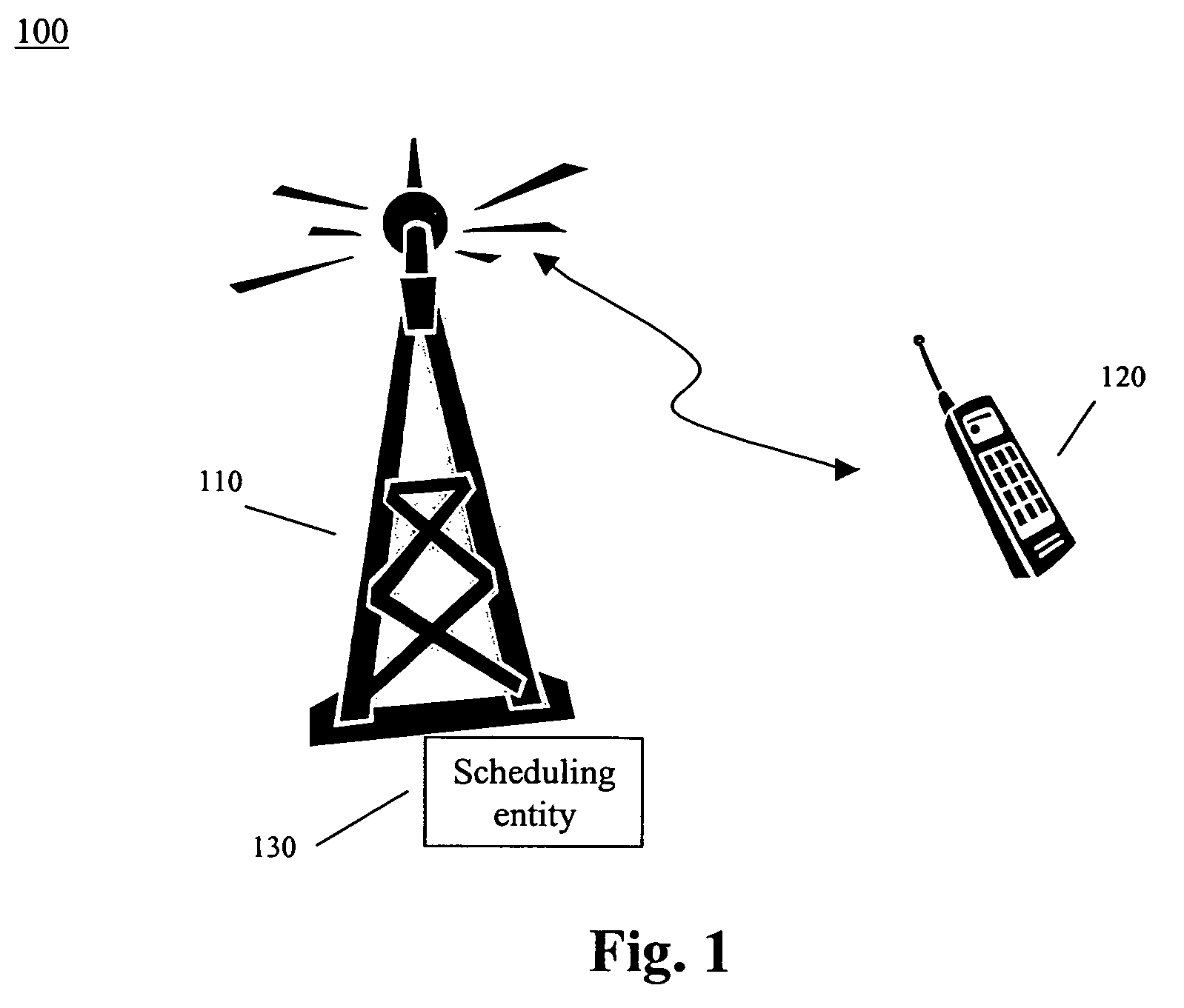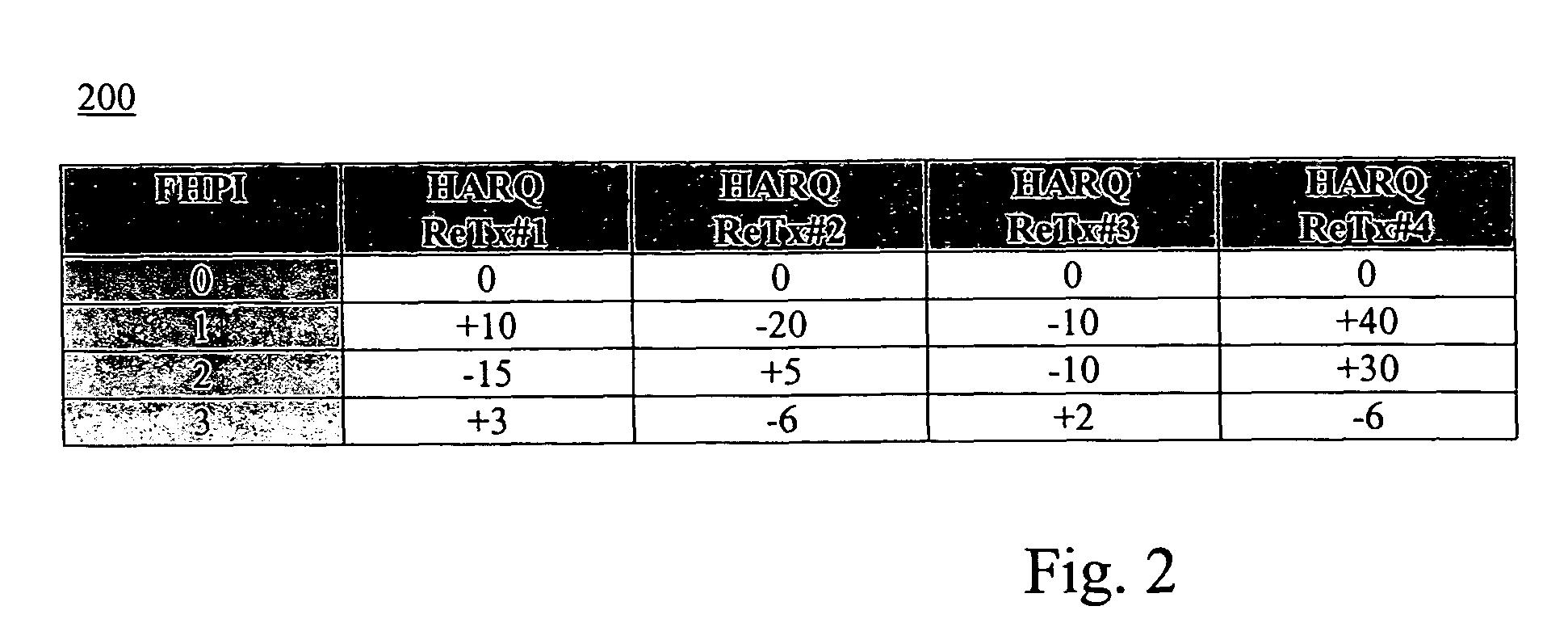Method of signaling allocated resources
a signaling resource and resource allocation technology, applied in the field of wireless communication systems, can solve the problems of increasing signaling overhead, reducing the overall signaling overhead associated with scheduling re-transmissions, and spreading reverse link transmission over a narrow bandwidth and not spreading, etc.
- Summary
- Abstract
- Description
- Claims
- Application Information
AI Technical Summary
Benefits of technology
Problems solved by technology
Method used
Image
Examples
Embodiment Construction
[0013]FIG. 1 depicts a wireless communication system 100 comprising a base station 110 and a mobile station 120 used in accordance with one embodiment of the present invention. Base station 110 includes a scheduler (or other scheduling entity) 130 for allocating sub-carriers to mobile station 120. Data packets are transmitted between base station 110 and mobile station 120 over an Orthogonal Frequency Division Multiple Access (OFDMA) air interface. All data packet transmissions from mobile station 120 to base station n110, i.e., reverse link, are scheduled transmissions.
[0014]Scheduling reverse link data packet transmissions involve scheduler 130 allocating a set of one or more sub-carriers to each mobile station 120 to used for its reverse link transmissions. In one embodiment, the set of allocated sub-carriers include contiguous sub-carriers. The allocated sub-carriers are communicated to mobile station 120 by base station 110 in a scheduling grant or some other message.
[0015]Mobi...
PUM
 Login to View More
Login to View More Abstract
Description
Claims
Application Information
 Login to View More
Login to View More - R&D
- Intellectual Property
- Life Sciences
- Materials
- Tech Scout
- Unparalleled Data Quality
- Higher Quality Content
- 60% Fewer Hallucinations
Browse by: Latest US Patents, China's latest patents, Technical Efficacy Thesaurus, Application Domain, Technology Topic, Popular Technical Reports.
© 2025 PatSnap. All rights reserved.Legal|Privacy policy|Modern Slavery Act Transparency Statement|Sitemap|About US| Contact US: help@patsnap.com



